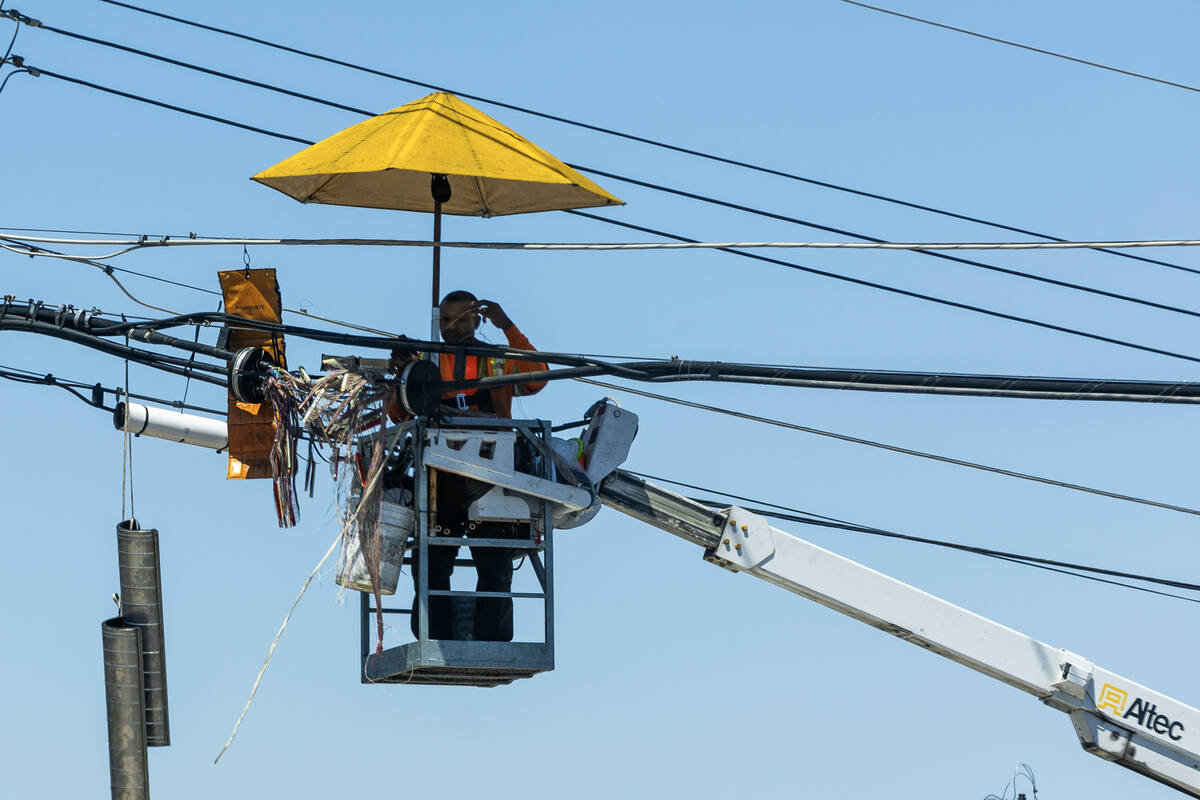Nevada’s new worker heat protections could be model for US
Nevada’s new rules aimed at protecting workers from heat illness could become the template for changes nationwide as the federal government considers implementing similar extreme heat workplace regulations.
The state’s extreme heat protections were established last fall and went into effect in April. Now, national employer groups and businesses are recommending the federal government consider applying Nevada’s “performance-based” standards instead of using across-the-board temperature thresholds to trigger illness prevention measures.
But some activists and lawmakers are concerned about taking the relatively untested rules to the federal level.
“It hasn’t even been one summer,” Assemblymember Cinthia Moore, D-North Las Vegas, said. “We don’t even know if what we have is actually working or not.”
Nevada’s new regulation
Nevada’s Occupational Safety and Health Administration adopted the rule in November 2024, compelling businesses with more than 10 employees to conduct a one-time “job hazard analysis” of working conditions that could lead to heat illness.
The businesses must then create a written safety program to address those issues, such as access to potable water and breaks for employees showing signs of heath illness. Employee complaints would trigger an OSHA investigation, during which the state would confirm whether the job hazard analysis existed and whether it was being followed. Employers can be cited if they do not complete corrective action.
The regulation was a result of years of discussion. State lawmakers rejected a version of the regulation in 2022, and a bill during the 2023 legislative session failed because stakeholders could not agree on a temperature threshold that would have required employers to take action against heat illness. The bill proposed a threshold of 105 degrees.
Victoria Carreon, administrator of the Department of Business and Industrial Relations that oversees OSHA, said they learned from the years-long debate that the regulation needed more flexibility to receive final approval.
“We ended up changing to an approach of looking at the hazards instead and having employers be required to evaluate the hazard because even 90 degrees could be inadequate in certain situations, depending on the environment,” Carreon said.
Federal government considers its own rule
That flexibility was at the center of comments during the U.S. OSHA hearings in June and July. Stakeholders told the regulatory panel they should consider changing the proposed rule to fall in line with the performance-based standards described in Nevada’s regulations.
U.S. OSHA proposed to require workers to offer heat illness mitigation efforts — such as shade and water — once the heat index reaches 80 degrees. It also proposes required 15-minute paid breaks for employees after two hours when the heat index reaches 90 degrees.
The Biden administration first proposed setting new regulations for heat injury and illness protection in October 2021.
State regulations must be at least as effective as what is adopted at the federal level.
U.S. OSHA representatives did not specify what will happen after the public comment period closes on Sept. 30.
“Once the record on the hearing closes, the Department will take everything into consideration and make a decision on how to proceed,” spokesperson Kimberly Darby said in an email.
Commenters who spoke against parts of the proposed rule argued it set unrealistically low heat triggers and could be too onerous for some industries.
Marc Freedman, vice president of workplace policy at the U.S. Chamber of Commerce, told regulators a performance-based standard would not result in employers “being let off the hook,” but instead accountable to industry-specific standards.
“That’s where the value of a heat standard lies: making sure that employees are protecting their employees and a performance-oriented standard has the emphasis on that goal rather than the myriad of other goals that are contained in the proposal,” Freedman said at a June 16 virtual hearing.
Advocates remain concerned
Health and environmental advocates say the rule could do more to protect workers.
“I’m concerned with the fact that these regulations have only went into effect three months ago, and business and industry is already touting this as the gold standard,” Moore said, “and that everybody else should follow this by going through the federal OSHA, saying, ‘Look at Nevada. This what they’re doing.’ And any time business and industry says, ‘This is good,’ I question whether or not it really is good.”
Carreon said she believed the reason Nevada’s regulation was heralded from some at the national level was because the state was able to find consensus.
“It will take some time to see the impact of the regulation,” she said, adding that the agency will monitor complaints and their outcomes to determine the success of the rule over several summers.
Carreon said the agency can work with businesses to help them come into compliance with the regulation. It is also working on educational efforts for workers to know their rights and the signs of heat illness.
Nevada OSHA has received 288 heat-related complaints through July 30 this year, according to the agency’s complaint dashboard.
Moore said the regulations are crucial to protecting workers, especially in a state with two of the country’s fastest-warming cities.
“We’ve heard stories from people that have experienced extreme heat illness from extreme heat, and they’ve had to miss several weeks of work just to be able to recover,” Moore said. “So, we want to prevent that. We want to provide people with the tools that they need to do their work safely.”
Whether a federal rule is even adopted is also still unknown. The agency — now under the Trump administration’s control — could choose not to adopt the proposed rule, as some pointed out during the federal hearings.
“I think there’s still a question. I’ll count myself among those who were somewhat surprised to see this hearing kept on the schedule,” Freedman said.
Contact McKenna Ross at mross@reviewjournal.com. Follow @mckenna_ross_ on X.



















